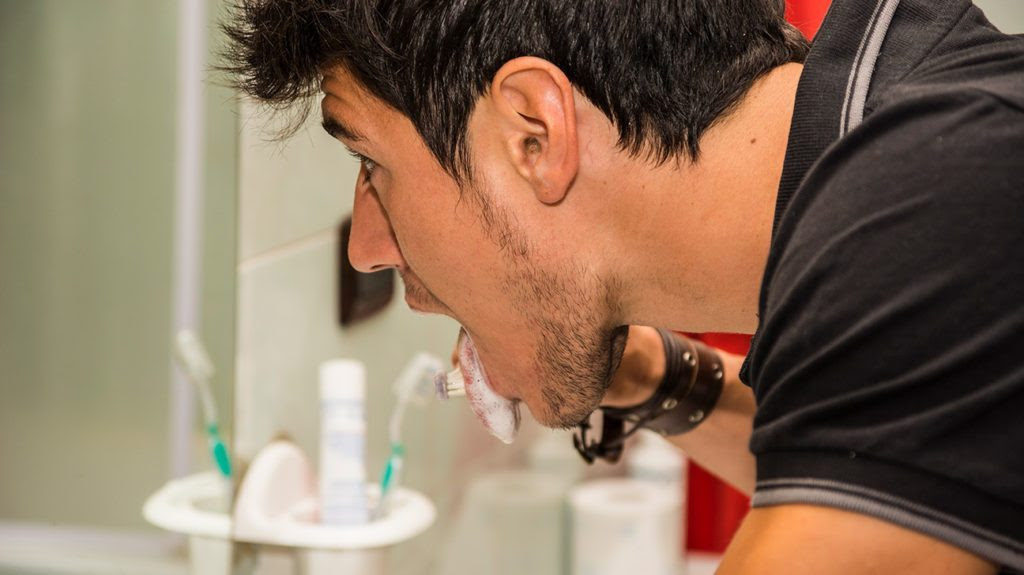Tongue scraping is a method of cleaning the tongue using either a special device or a toothbrush. Some people believe that using a tongue scraper can improve oral hygiene and reduce the risk of bad breath, or halitosis.
In this article, we provide an overview of tongue scraping, including the research behind its potential benefits, how to do it, and other tips for a healthy mouth.
Does it have any benefits?

A person can use a specialized scraper or a toothbrush when tongue scraping.
The main reason why most people use a tongue scraper is to prevent bad breath. Tongue scraping aims to remove odor-causing substances called volatile sulfur compounds (VSCs).
There is some evidence that tongue scraping may help improve oral hygiene, but not all research papers agree.
The body of research into tongue scraping and bad breath includes the following studies:
A 2018 analysis of four randomized controlled trials on tongue scraping found that it improved tongue coating index scores but did not significantly affect VSCs.
A 2019 Cochrane review reviewed studies on measures to reduce halitosis, which included two studies looking at the effect of tongue scraping on bad breath. The studies did show a small improvement in tongue coating scores and VSCs over a few weeks. However, the authors concluded that the evidence was “very uncertain” due to the small number of study participants.
An earlier Cochrane review found “weak and unreliable evidence” to show that tongue scrapers are more effective than toothbrushes in reducing VSCs and improving bad breath.
In addition to its possible ability to relieve bad breath, some people may use tongue scraping to reduce potentially harmful bacteria in the mouth that could cause cavities, gingivitis, or mouth ulcers.
Some research studies looking at this possible benefit include the following:
A 2017 study found that in people with periodontitis, cleaning the tongue with a tongue scraper or a toothbrush for 2 weeks neither reduced the number of bacteria in the saliva and tongue coating nor influenced the person’s taste sensations or breath odor. However, the participants did report that their tongue felt cleaner at the end of the study.
A small-scale 2007 study involving 30 people found that using a nylon toothbrush to clean the tongue reduced the amount of Candida yeast in the mouth but that using a plastic or metal tongue scraper was ineffective.
The findings of a 2015 randomized clinical trial suggest that tongue scraping, tongue brushing, and saline rinsing in children have a more significant effect on the bacteria that cause cavities than just brushing alone.
Most studies or reviews on this topic have small sample sizes, which makes it difficult for scientists to make firm conclusions regarding tongue scraping and its benefits.
People should note that tongue scraping will not treat medical conditions, such as thrush.
Step-by-step guide
Tongue scraping is relatively easy to perform and requires minimal equipment. A person can use a specific tongue scraper or a toothbrush. Tongue scrapers are available in metal or plastic. They tend to be either a spoon-like shape or a U-shaped metal device with two handles.
People can use the following steps to scrape the tongue:
After brushing and flossing, open the mouth wide and place the tongue scraper on the furthest reachable point on the back of the tongue.
Apply gentle pressure and pull the scraper forward toward the tip of the tongue. The scraper should not hurt.
Rinse the scraper with warm water after the first pass.
Repeat the scraping process as necessary.
Swish the mouth with water and then spit it out.
Wash the tongue scraper thoroughly with soap and warm water. Store the tongue scraper in a clean, dry place between uses.
A person may wish to repeat this process throughout the day as bacteria and sulfur compounds build up continuously.
Possible risks and side effects
Tongue scraping is a painless and low risk procedure.
If tongue scraping causes pain or bleeding, the person should stop using the scraper. They might be using it with too much force, or there may be uneven edges on the scraper that could be injuring the tongue.
It is important to avoid placing the scraper too far back on the tongue, as this can activate the gag reflex.
If a person uses a tongue scraper and notices that their symptoms worsen or their tongue feels sore or painful, they can talk to their dentist. Their dentist can help them determine whether they have an underlying condition that may cause bad breath or give the tongue an abnormal appearance.
Tips for a healthy mouth
Tongue scraping should not be the only approach that a person takes to their oral health. Daily mouth care will help reduce the risk of tooth and gum problems.
Examples include:
Brushing the teeth twice daily with a toothpaste that contains cavity-fighting fluoride.
Flossing or using another apparatus, such as a water flosser, to clean between the teeth at least once a day.
Limiting the intake of high sugar drinks and snacks as these can promote the growth of cavity-causing bacteria on the teeth.
Seeing a dentist at least twice per year, or more often if necessary, to undergo professional cleaning and to assess the need for treatment.
Most people who follow these tips will not need separate interventions, such as a tongue scraper. However, some people do find that a tongue scraper makes their mouth feel physically cleaner.
Summary
Tongue scraping is a method that some people use to reduce bad breath and improve their oral hygiene. A range of tongue scrapers is available to purchase online.
Small research studies have produced mixed results on whether cleaning or scraping the tongue can help offer these benefits. However, as tongue scraping has few side effects, a person can try this approach to see whether it works for them.
Dentistry Dermatology

Leave a Reply